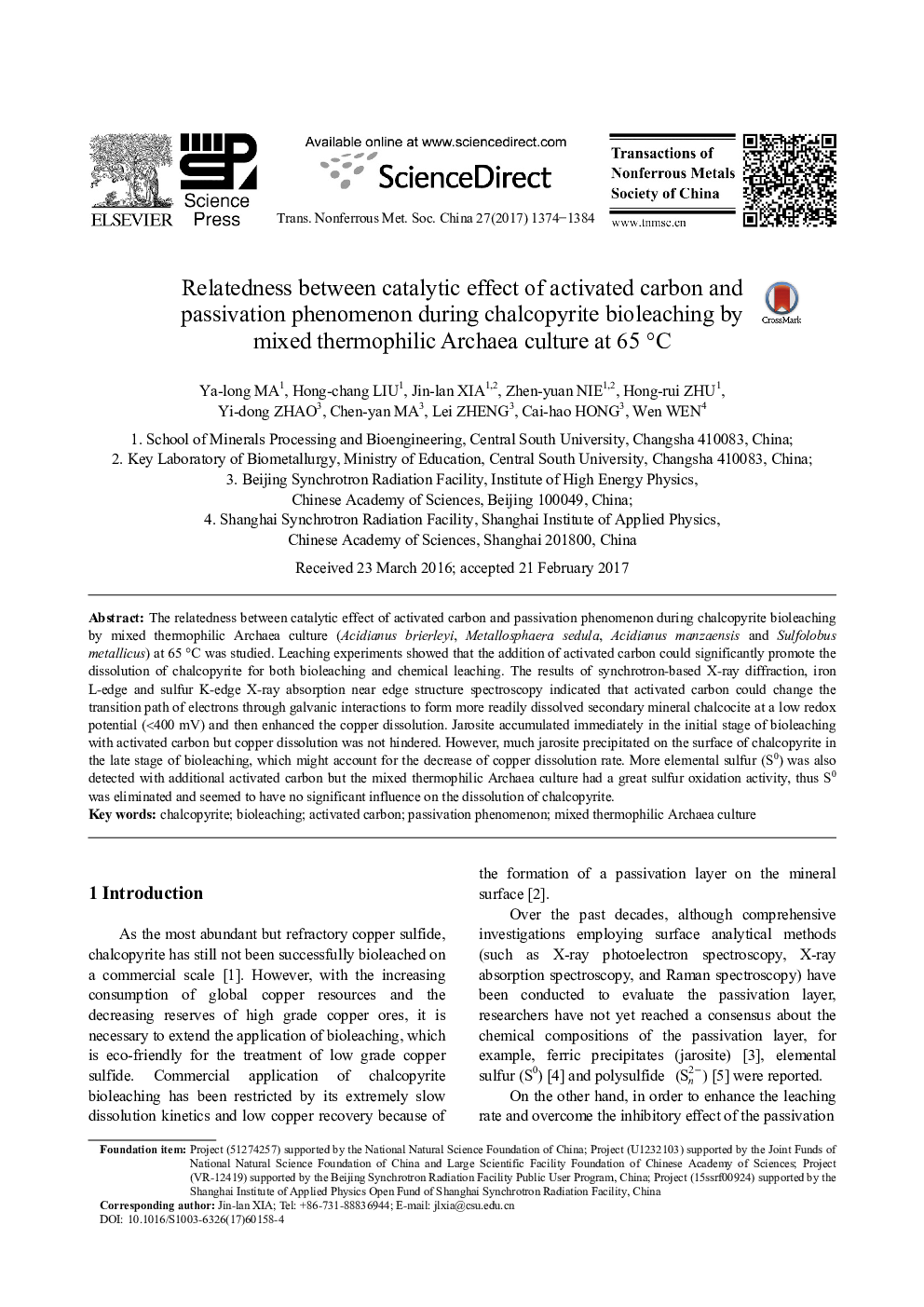| Article ID | Journal | Published Year | Pages | File Type |
|---|---|---|---|---|
| 8011905 | Transactions of Nonferrous Metals Society of China | 2017 | 11 Pages |
Abstract
The relatedness between catalytic effect of activated carbon and passivation phenomenon during chalcopyrite bioleaching by mixed thermophilic Archaea culture (Acidianus brierleyi, Metallosphaera sedula, Acidianus manzaensis and Sulfolobus metallicus) at 65 °C was studied. Leaching experiments showed that the addition of activated carbon could significantly promote the dissolution of chalcopyrite for both bioleaching and chemical leaching. The results of synchrotron-based X-ray diffraction, iron L-edge and sulfur K-edge X-ray absorption near edge structure spectroscopy indicated that activated carbon could change the transition path of electrons through galvanic interactions to form more readily dissolved secondary mineral chalcocite at a low redox potential (<400 mV) and then enhanced the copper dissolution. Jarosite accumulated immediately in the initial stage of bioleaching with activated carbon but copper dissolution was not hindered. However, much jarosite precipitated on the surface of chalcopyrite in the late stage of bioleaching, which might account for the decrease of copper dissolution rate. More elemental sulfur (S0) was also detected with additional activated carbon but the mixed thermophilic Archaea culture had a great sulfur oxidation activity, thus S0 was eliminated and seemed to have no significant influence on the dissolution of chalcopyrite.
Related Topics
Physical Sciences and Engineering
Materials Science
Metals and Alloys
Authors
Ya-long MA, Hong-chang LIU, Jin-lan XIA, Zhen-yuan NIE, Hong-rui ZHU, Yi-dong ZHAO, Chen-yan MA, Lei ZHENG, Cai-hao HONG, Wen WEN,
